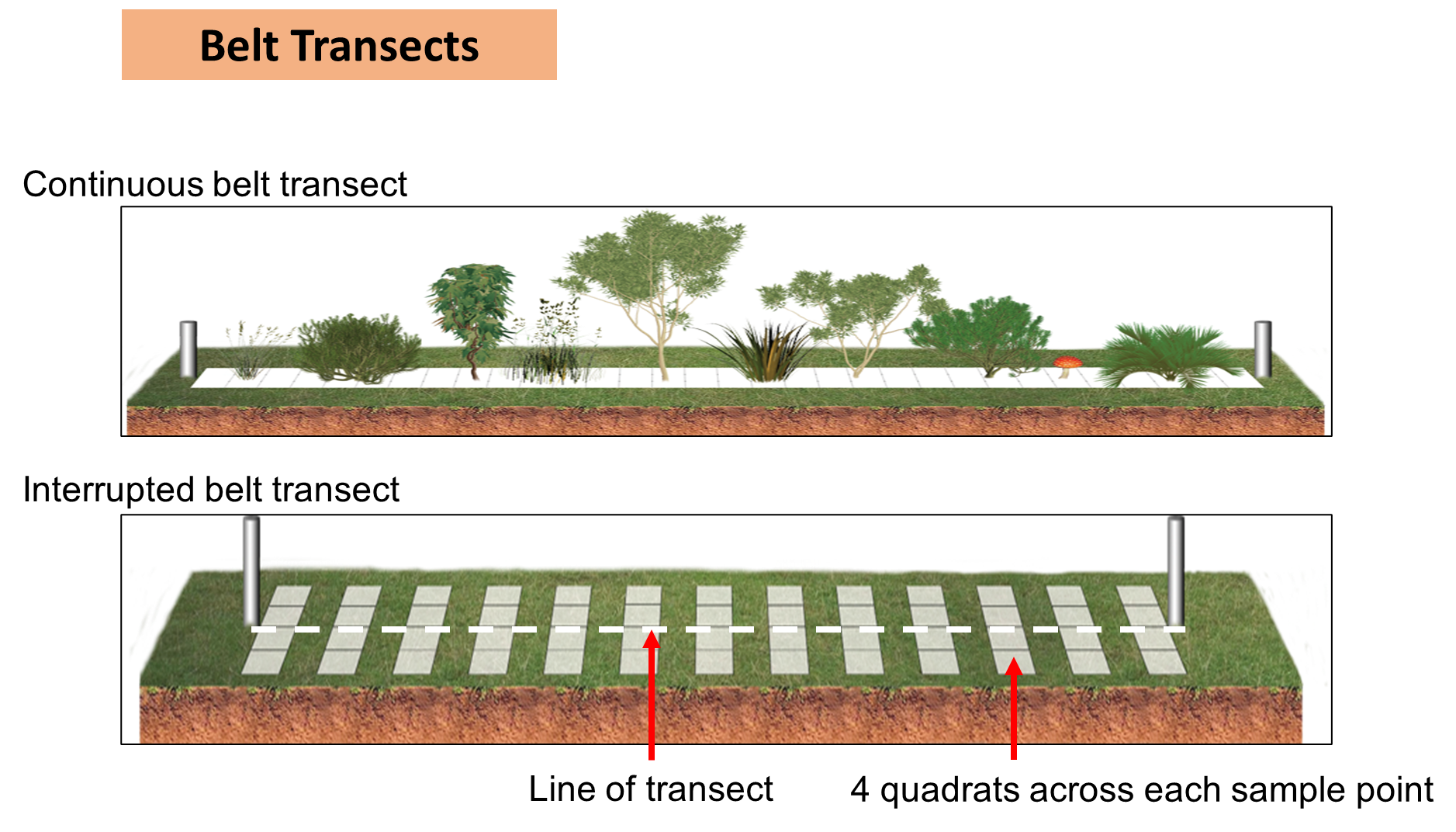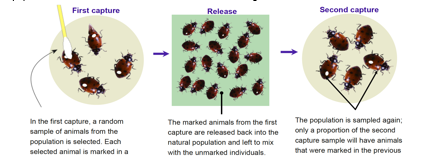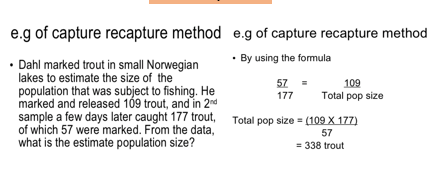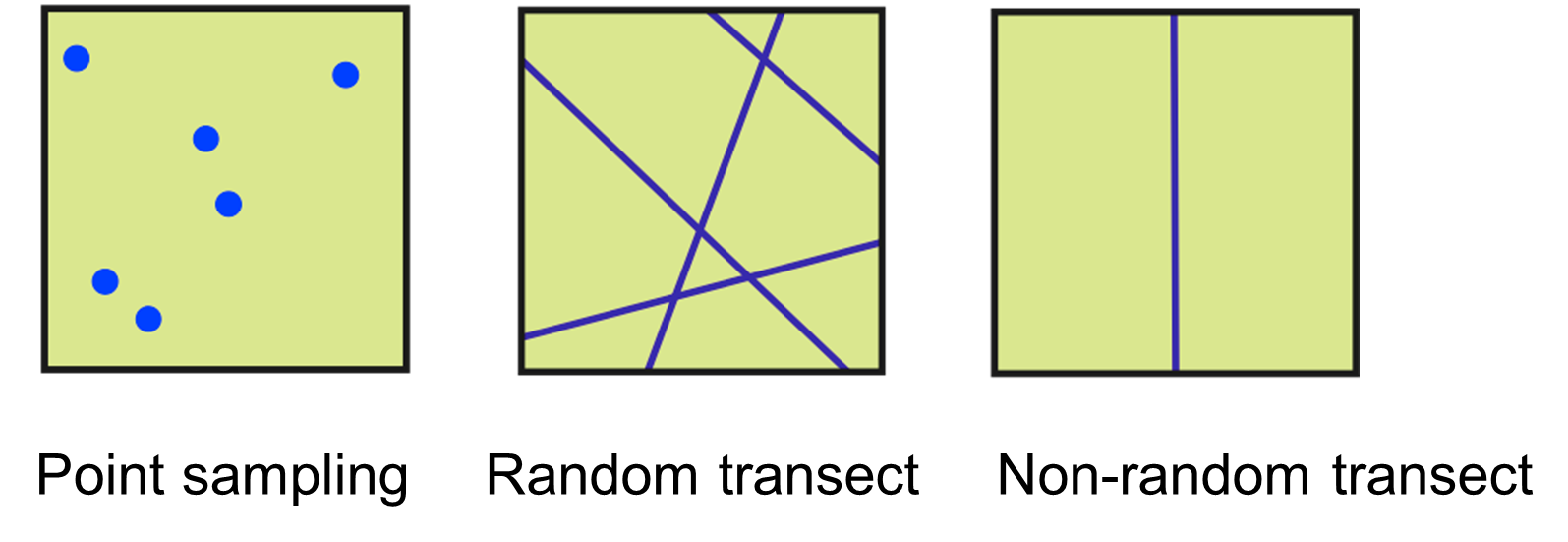Sampling methods in biodiversity
1/20
There's no tags or description
Looks like no tags are added yet.
Name | Mastery | Learn | Test | Matching | Spaced |
|---|
No study sessions yet.
21 Terms
What is a quadrat and how is it used in biodiversity sampling
A quadrat is a square plot used to sample and study the distribution of organisms.
It’s recommended to sample about 10% of an area for effective analysis.
Why are quadrats particularly useful
They help study ecological requirements and are effective for organisms whose habitat preferences are well-known.
Indicator species can be assessed through quadrat surveys.
What are the two belt transects

What are indicator species
Examples
Species whose presence, absence, or abundance reflects a specific environmental condition, helping assess the health of an ecosystem.
Frogs (pollution indicators), lichens (air quality indicators).
indirect sampling
Estimating animal presence without seeing them directly
Why is indirect sampling used for mammals
Mammals are often widely dispersed, secretive and elusive; indirect methods avoid disturbing them and still provide information about their presence
What are the pros and cons of indirect sampling
Pros
preferable when direct sampling is difficult or could cause undue harm to the organisms involved
Cons
provides a ‘best guess’ of population attributes but estimates made this way are less accurate than those made using other methods
Name some indirect signs used to detect mammals
Scats
tracks
burrows
food remains
skulls
skins
What is spotlighting
Using a high-powered torch to observe nocturnal mammals. Caution is needed to avoid disturbing habitats
What is direct observation in biodiversity studies
Watching and recording animal behavior or presence without intermediate indicators
What is live trapping? Why is it restricted?
Capturing animals alive to collect detailed data like weight, sex, and genetic profiles.
It can interfere with animals’ lives and usually requires permits.
What is Mark & Recapture method
A technique where animals are captured, marked, and released, and later a second capture helps estimate population size

what is the equation for mark and recapture
N = (number initially marked x number of individuals captured in 2nd sample) / number of marked individuals recaptured in 2nd sample
What is necessary for accurate Mark & Recapture studies
Ideally 20% of the population should be marked, but marking small or mobile animals can be difficult

How are birds sampled differently from mammals
Birds are easier to locate through direct observation and by listening to their calls
What does point sampling, random transect and non-random transect look like

What ethical principles must be followed in biodiversity studies involving animals
Beneficence – the welfare of research participants must be a primary goal. Ethics approval is usually required.
Acting for the benefit of others; avoiding harm
What are two major threats to global conservation efforts
Poaching and habitat destruction.
How can conservation be improved according to social justice ideas
Empowering local communities to participate actively in conservation efforts
Why is poverty a key issue in conservation
Poverty can drive illegal activities like poaching; addressing social justice improves conservation outcomes
sampling bias
When samples do not accurately represent the whole area or population, affecting the reliability of results